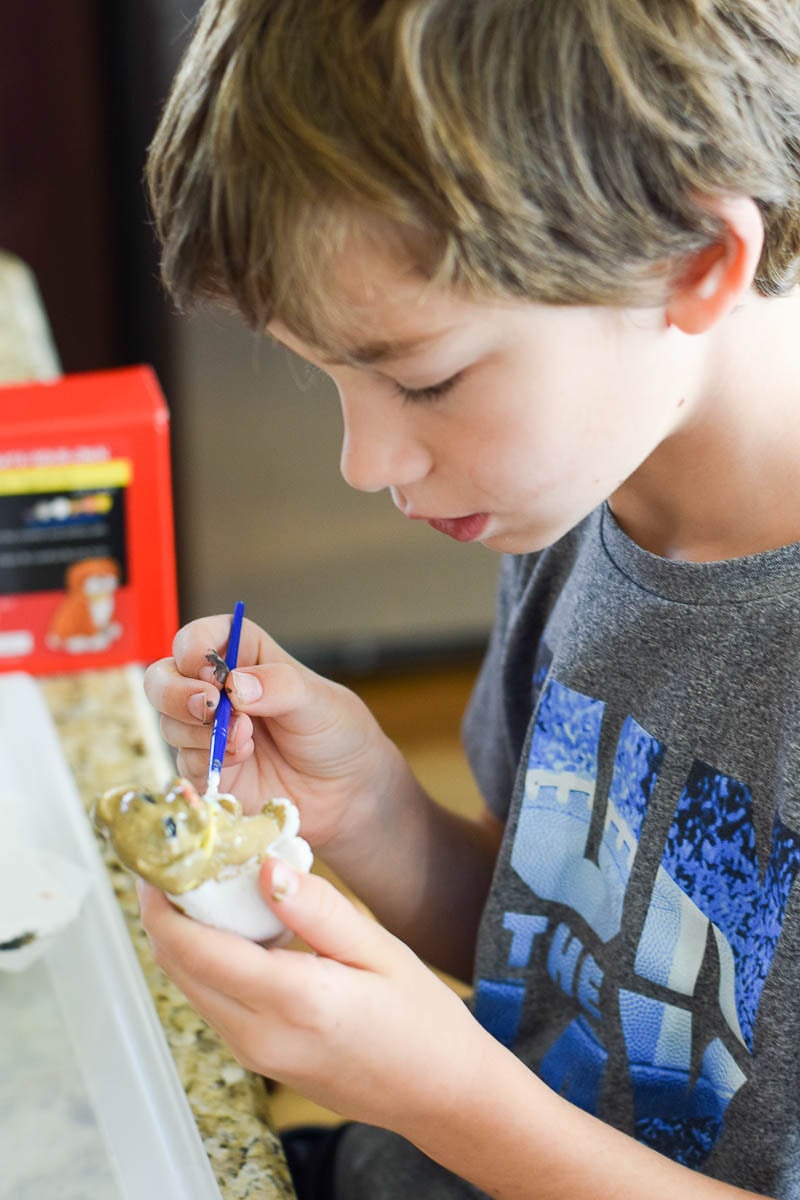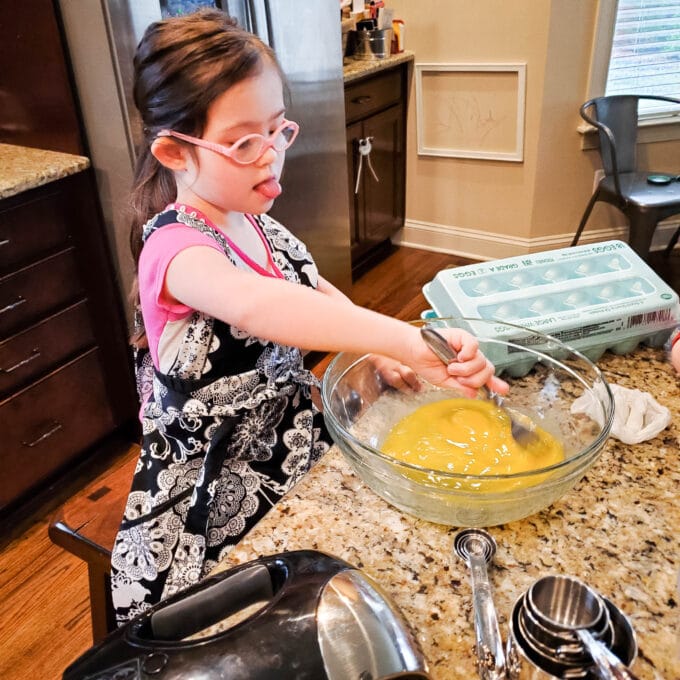Vertical Writing Ideas for Older Kids
If you’re looking for creative vertical writing ideas for older kids you’ve come to the right place.
Sure, I’ve included some inspiration you can use with younger children as well.

Get our THIS LITTLE HOME OF MINE nEWSLETTER
Delivered directly to your inbox!




But my hope is that this post will encourage you to carry on that vertical work with your kids as they continue to grow!


Our children do most things across horizontal surfaces, don’t they?
Writing atop horizontal planes. Coloring and drawing and painting across a horizontal table top. Building block towers and playing with Play-Doh starting from a horizontal surface. Even eating from a horizontal surface!
There’s no getting away from some of this.
Because of good ol’ gravity, some things just simply have to work with gravity, rather than against it! But always working from a horizontal surface has some detrimental physical effects.
The Hazards of Too Frequent Horizontal Play
Although tables, desks, and floors are convenient in that items stay in place, they definitely encourage poor posture!
Watch your child’s body position during a period of prolonged horizontal play.
You’ll notice them hunch forward over their work. Their neck position shifts into a slouch. Their arm movements are limited by their naturally relying on the table to provide elbow stability.
They rely on smaller movements to draw or write, moving from the fingers and wrist rather than the elbow and shoulder. You’ll likely notice their pencil grip become increasingly tense as time passes.
Why Older Children Should Work from a Vertical Surface
Not only will shifting to a vertical surface prevent the posture problems I just mentioned, but it also has a whole host of other health benefits!
- Midline Crossing – Imagine a line running straight through your body, from the top of your head to the space between your feet. In the occupational therapy world, this is known as the “midline”. Midline crossing is a key developmental skill that affects affects coordination, core strength, and brain flexibility between the hemispheres. It’s important! By placing your child in front of a large vertical surface, he or she will necessarily have to cross the midline of their body with their dominant hand in order to draw or write on it.
- Bilateral Coordination – Having to use one hand to stabilize a piece of paper on a wall, or hold up a stencil to paper taped to an upright surface, requires each hand to do very different things! One hand has to hold the paper or stencil still – this requires firm and sturdy pressure. The other hand has to be able to move freely – this requires motion and a lighter touch. The use of both hands in different ways is called bilateral coordination!
- Shoulder And Elbow Stability – Fine motor skills are only as strong as the gross motor skills they rest on! If a child’s shoulders and elbows are uncoordinated and unstable, their wrists won’t be able to perform the fine motor tasks that schoolwork demands of them. However, the use of larger vertical surfaces requires children to use large movements! Set a child in front of a chalkboard and watch them use their entire arm! Bigger arm movements provide strength and flexibility to all of the joints and muscles of the arms.

- Wrist Extension – Much of the problem with a child’s pencil grasp comes from poor posture from writing at a table! If a child writes horizontal lines across a vertical plane, their wrist will naturally shift into an extended position. And this is exactly what leads to a better pencil grasp! In fact, this hand stabilization will help children in all sorts of fine motor activities. Do you have a toddler? Wrist extension will help with coordination with utensils at mealtime as well!
- Stronger Core Muscles – If you set your child to work on a vertical plane and take away the chair (or encourage them to sit on the very edge of it), watch them assume a beautiful upright posture! Whether they kneel, or stand, or sit on the edge of a chair, their core and back muscles will be engaged.
- Spatial Awareness – Does your child have a hard time understanding directional terms? When they have to use their whole body to draw a horizontal line to the left or right, vertical line, and diagonal lines, it helps them internalize these directions in their own body!
Ways to Bring Vertical Writing Into Your Home
There are many ways that young children can play on vertical surfaces,









but often, the needs of older kids are forgotten.
They need vertical work that captures their attention and challenges their hand strength too!




Here are some ways you can provide opportunities for vertical work.
- Use dry erase markers to practice spelling words or vocabulary terms on a window or mirror. They’ll wipe off easily, don’t worry! And, if you use a window, there’s the added benefit of strengthening your child’s eyes. The outdoor scene coming through the window will be moving, but they’ll be writing stationary letters on a stationary surface.
- Speaking of dry erase markers, did you know you can use them directly on the some fridges as well? It can be the same type of surface as dry erase boards! Your child will think that you’re SO COOL for letting him write on the fridge, and he won’t even realize that he’s strengthening his writing muscles! Our refrigerator isn’t like that, but Color Wonder paper taped to the front of the fridge has worked for us.






- You might not have space for mounting a full chalkboard in your dining room or homeschool room, but chalkboards are available in many different sizes! The vertical surface of the chalkboard is perfect plane for vertical surface activities. Even a small wall chalkboard can be used to solve math problems.
- Painting and drawing with the paper on a wall strengthens the muscles of the upper extremities in much the same way the writing does. In fact, most painters make a point to make their art on upright easels because it’s frees up their arm to make large, fluid movements.
- Put a package or two of alphabet magnets on the fridge! Your older child can practice their spelling and vocabulary using these magnets, without needing to bring any sort of writing utensil into the equation.
As you’ve been reading these ideas and glancing at these photos, what ideas have come to mind for your child?



Have a wide variety of ages in your home?
Get everyone busy working vertically at the same time!
Or allow the younger kids to spray and clean the written words off the vertical surfaces the older kids have used.




If you loved these ideas, you might also enjoy reading about the benefits of cooking with your kids!











Does your child want to learn to play chess?